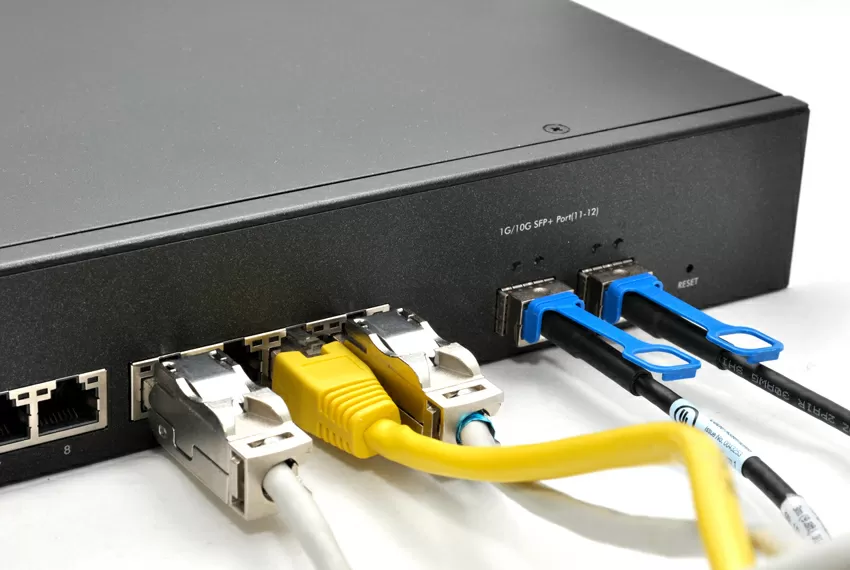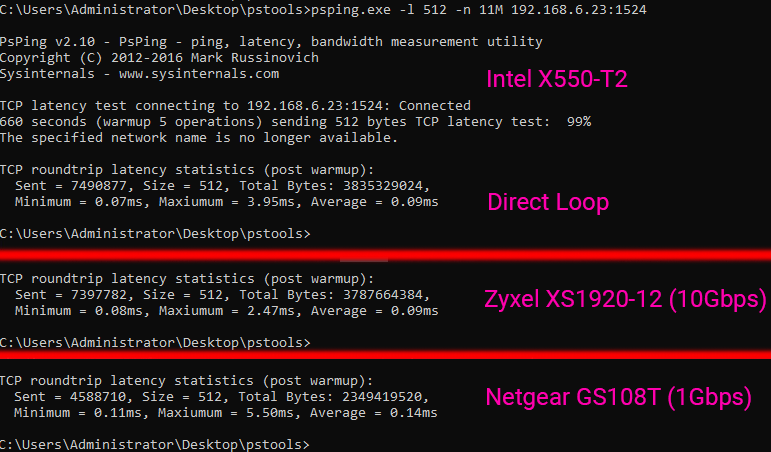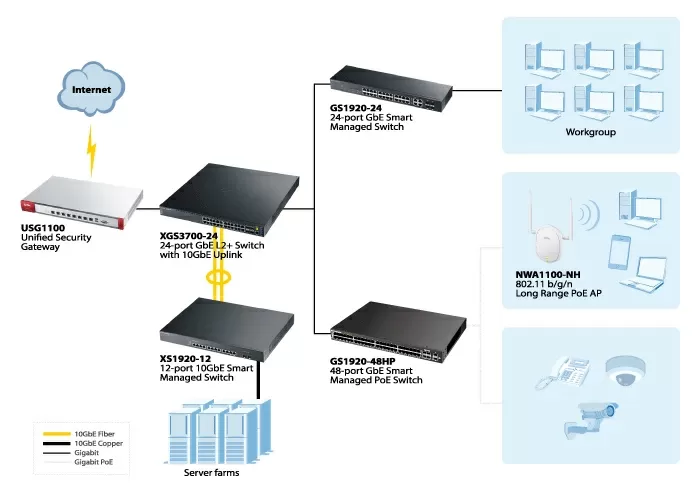Zyxel XS1920-12 10 Gigabit Switch Review
When moving to a 10-gigabit network infrastructure, you are likely to come across two media: optical and copper. In the first case, these will most likely be backbone connections, and in the second, modern equipment, which usually has the 10Gbase-T standard. For these use cases, Zyxel has the XS1920, a 12-port managed switch, 2 of which are combo.
Of course, by modern standards, to give 12 ports, even if they are 10 Gigabit, the full width of a 1U case looks like a waste, but let's make an allowance for the fact that the XS1920-12 was introduced back in 2017, and even today not inferior to new models.
Port Density and Compatibility
The switch has 12 10GBase-T ports arranged in one row, and each port has its own activity/speed indication. A 10 Gbps link is indicated by a dark blue LED indicator. Ports 11 and 12 are paired with SFP + slots, so the optical medium is included in the overall switching fabric of the device.

In general, 10-gigabit devices are capricious when working with different cables, which we saw in the test QNAP QNAP QSW-1208-8C , so traditionally, we check compatibility with RJ45 connectors and cables of categories 5, 6 and 7. One-row arrangement of ports with latches upwards does not cause any difficulties when connecting any network devices.
|
Cable type
|
Category |
Length |
Speed |
|
Unshielded UTP 20 cable (factory crimped) |
5 |
20 cm |
10 Gbps
|
|
Foil-clad FTP cable, 50 cm (Siemens detachable chips) |
5E |
50 cm |
10 Gbps
|
|
50 cm unshielded UTP cable (hand crimped) |
5E |
50 cm |
10 Gbps
|
|
Shielded STP cable,
|
5E |
2 meters |
10 Gbps
|
|
Shielded STP cable,
|
6 |
1 meter |
10 Gbps
|
|
Shielded STP Cable
|
7 |
35 meters |
10 Gbps
|
|
DAC SFP +, Intel
|
3 meters |
10 Gbps
|
you should also keep in mind that the switch may not work with your network cards: this phenomenon is typical for some models of old 10-Gigabit switches, for example Ubiquiti EdgeSwitch 16 XG or 1-Gigabit devices of the company Mikrotik, so to make it easier for you, we are running a compatibility test with our fleet of 10 GB devices.
|
Network Card (clickable)
|
Compatibility |
|
Yes
| |
|
Intel X540 |
Yes
|
|
Intel X550 |
Yes |
| Intel X557
|
Yes
|
|
Intel X550-T2 |
Yes
|
|
Yes
| |
|
Mellanox ConnectX-2
|
Yes
|
However, despite any tests, still provide for the possibility of checking on your own fleet of equipment and returning in case something does not work.
Design and element base
The whole design is reduced to remove 94 watts of power consumption from a shallow 1-unit case. 10 Gigabit switches are still very hot things, so the CPU and PHY cooling here is like in a good server. Indeed, it is these chips that perform checksum calculations, and the lion's share of power consumption. In the Zyxel XS1920-12, two fans are diverted to them, and one is enough for the processor and power supply.
By the way, about the components: the power supply unit - Delta Electronics (not to be confused with the "Delta" that makes the yellow batteries) with Japanese Nichicon capacitors, the fans - from the same "Delta", need no introduction, on the motherboard board - Sanyo capacitors. It's nice to see expensive branded components with a long service life under tough conditions. That said, even for such a thermally loaded design, Zyxel retained the side cooling scheme so that the switch could be installed in short, closed wall cabinets. Moreover, XS1920-12 has an extended temperature range: it can work when "overboard" - from 0 to 50 degrees Celsius. It's more resilient than many server motherboards, and even has dual BIOS so you can rollback if an update fails.
Customization features
Today, almost 4 years after the release of the XS1920-12, there are many 10 Gigabit switches on sale, including much cheaper ones. And how many of them support channel aggregation for those who are not enough 10 gigabits? Here is the XS1920-12 in question - maybe there are 6 groups available to you, in each of which you can define any number of ports using a static method or LACP. Or if we are talking about VLANs, they are supported here as a static configuration based on ports (which is what even the cheapest switches have) and:
- based on IP subnets,
- set statically
- obtained by DHCP
- protocol-based
- IP
- IPX
- ARP
- RARP
- Apple Talk DECNET
- MAC-based with priority
- based on OUI Voice VLAN
There can be as many VLANs as you like on one port, including private networks, but you can limit the number of MAC addresses per port and VLAN to prevent unknown devices from connecting to the network. One of three protocols is available to protect against loops: RST (default), MRST, and MST.
In general, according to the settings, the Zyxel XS1920 is a typical example of a SMART switch, and if you are not going to put it in the center of the network core, placing traffic control on it, then these capabilities will probably be more than enough.
Testing
For testing, we use a stand with the following configuration:
- AMD EPYC 7552P
- ASRockRack EPYCD8-2T
- 32GB RAM
- Intel X520
- Transcend SSD230S
- VMWare ESXi 6.7U3
- Windows Server 2019 x64
- PassMark Performance Test 9.0
- pstools x64
To exclude the influence of the OS, the network port was forwarded to the guest virtualka as a PCI-E device. In the same tests, traffic was launched through the switch and directly connecting the board ports. For Intel X520-DA2, a 3 meter DAC cable was used. With a minimum packet size of 512 bytes, we will see how the built-in switch buffer accelerates network traffic with a long streaming load. Please note that contrary to popular belief, twisted pair here gives higher traffic than DAC.
Now let's look at the same thing, but with a larger package of 9 Kilobytes, typical for file networks.
Let's look at the delay introduced by the presence of the switch in the transmission of network packets, for which we will use the psping utility from the PsTools package from Microsoft.

On average, the delay does not increase, and the maximum delay even decreases. But the minimum delay in the presence of a switch grows by an insignificant 0.01 ms.
Recommendations when ordering
Please note that the Zyxel XS1920-12 does not support the Nebula cloud service for remote device management over the Internet. This means that there will be no metrics and no binding to other people's services in your infrastructure. If you are choosing a switch for installation in a room where people work, then you can not worry about the high noise of the switch: automatic fan control keeps the noise level low.

I want to draw your attention to the fact that the device does not support intermediate speeds of 2.5 Gb/s and 5 Gb/s, which, contrary to my forecasts, suddenly rose from the ashes and are now beginning to appear in personal computers and cheap NAS-ah. Consider this point if you are going to purchase new workstations. Also, if you decide to expand your network, then keep in mind that stacking is not provided here.
If we consider the pricing policy of Zyxel, then the XS1920-12 switch does not stand out in anything: this device is `` in the market '', alongside the 14- and 16-port models of HPE and D-Link. The traditionally high component base, extended temperature range, and as a result - full compatibility with cables and network adapters - these are the strengths of this model.
Mikhail Degtyarev (aka LIKE OFF)
12/20/2020













